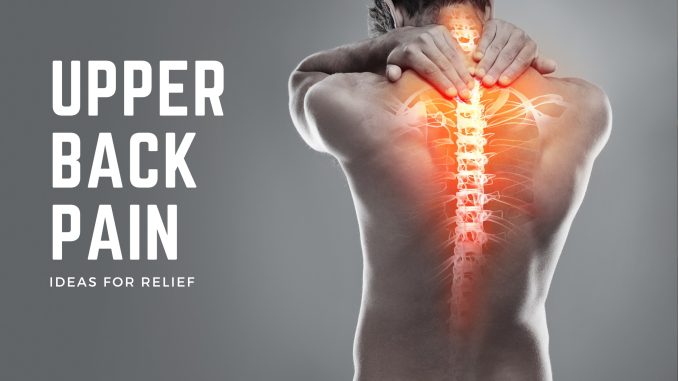
In an era increasingly defined by sedentary lifestyles, prolonged screen time, and the pervasive presence of digital devices, the importance of maintaining good posture has, unfortunately, often receded into the background of health consciousness. What might seem like a mere aesthetic concern or a fleeting discomfort, poor posture is, in reality, a silent architect of numerous insidious health problems, subtly eroding physical well-being and impacting everything from chronic pain to organ function. Understanding the far-reaching impact of poor posture is not just about standing taller; it’s about safeguarding your long-term health, mitigating chronic ailments, and enhancing your overall quality of life.
The most immediate and commonly recognized consequence of poor posture is, undoubtedly, chronic pain. When the spine is not properly aligned, undue stress is placed on muscles, ligaments, and joints, leading to a cascade of compensatory issues throughout the body. A hunched back (kyphosis) and forward head posture, for instance, can strain the neck and upper back muscles, leading to tension headaches, cervicogenic dizziness, and persistent aches in the shoulders and upper spine. Similarly, a slouched sitting position can flatten the natural curve of the lumbar spine, placing excessive pressure on the lower back discs and contributing to debilitating lower back pain. This consistent misalignment and strain gradually wear down the body’s structural components, leading to inflammation, muscle imbalances, and nerve compression, transforming occasional discomfort into persistent, debilitating pain that impacts daily activities and overall mood.
Beyond musculoskeletal pain, the impact of poor posture extends surprisingly to respiratory function. When the body is habitually slouched or hunched, the chest cavity becomes compressed, restricting the diaphragm’s ability to fully expand and contract. This limited thoracic mobility can lead to shallow breathing, reducing lung capacity and the efficiency of oxygen intake. Over time, this can diminish energy levels, contribute to fatigue, and even exacerbate conditions like asthma. Imagine trying to breathe deeply while constantly compressed; it’s physically impossible to draw a full, invigorating breath. Optimal posture, conversely, allows the lungs to expand freely, facilitating deeper breaths and more efficient oxygen exchange, which is fundamental for cellular energy and overall vitality.
The adverse effects also reach the digestive system. A perpetually slouched posture can compress abdominal organs, including the stomach and intestines. This compression can impede the natural flow of digestion, leading to issues such as acid reflux, heartburn, constipation, and slowed metabolism. When organs are not allowed their optimal space and alignment, their functionality can be compromised. Proper upright posture, however, creates ample space within the abdominal cavity, allowing digestive organs to function without impedance, facilitating smoother digestion and nutrient absorption. For someone experiencing chronic digestive discomfort, simply improving their seated or standing posture could offer surprising relief.
Furthermore, poor posture can negatively impact circulation and nerve function. Misalignments in the spine and neck can place pressure on nerves, leading to tingling, numbness, and pain in the extremities. This is particularly common in forward head posture, which can compress nerves radiating down the arms, or in poor sitting postures that irritate the sciatic nerve in the lower back, causing pain down the leg. Similarly, constricted muscles and vessels due to poor alignment can impede blood flow, leading to issues like cold hands and feet, or exacerbating existing circulatory conditions. Optimal posture ensures that nerves and blood vessels have clear pathways, allowing for unimpeded communication and nutrient delivery throughout the body.
The subtle yet profound influence of posture even extends to mood and mental health. Studies suggest a reciprocal relationship: poor posture can contribute to feelings of fatigue, low energy, and even symptoms of depression, while an upright posture can promote feelings of confidence, alertness, and positive affect. Slouching is often associated with feelings of defeat or sadness, and adopting such a posture can actually reinforce those emotional states. Conversely, standing tall and open conveys confidence, not just to others, but to your own nervous system, influencing neurotransmitter release and psychological well-being. This mind-body connection highlights that correcting posture is not just a physical adjustment but a powerful tool for emotional regulation and self-perception.
Consider a modern office worker, spending eight hours a day hunched over a computer. Initially, they might experience occasional neck stiffness. Over months, this evolves into persistent headaches, nagging lower back pain, and a feeling of perpetual fatigue, even after a full night’s sleep. They might also notice more frequent indigestion. This cascade of symptoms is a direct result of their habitual poor posture. Their forward head places immense strain on their neck and shoulders, their slouched back compresses their lungs and digestive organs, and prolonged static positions hinder circulation. Without intervention, these issues could become chronic, impacting their productivity, enjoyment of life, and potentially leading to more serious health complications requiring medical intervention.
In conclusion, poor posture is far more than an aesthetic imperfection; it is a silent, pervasive detractor from overall health, silently eroding musculoskeletal integrity, impairing respiratory and digestive function, compromising circulation and nerve health, and even influencing mood. Recognizing its profound impact is the first step towards proactive correction. By cultivating awareness, incorporating ergonomic adjustments in daily environments, and engaging in exercises that strengthen core muscles and promote spinal alignment, individuals can reverse the detrimental effects of poor posture. This commitment to maintaining an optimal alignment is not just about standing tall; it is a strategic investment in mitigating chronic pain, enhancing vital bodily functions, and securing a healthier, more vibrant life.